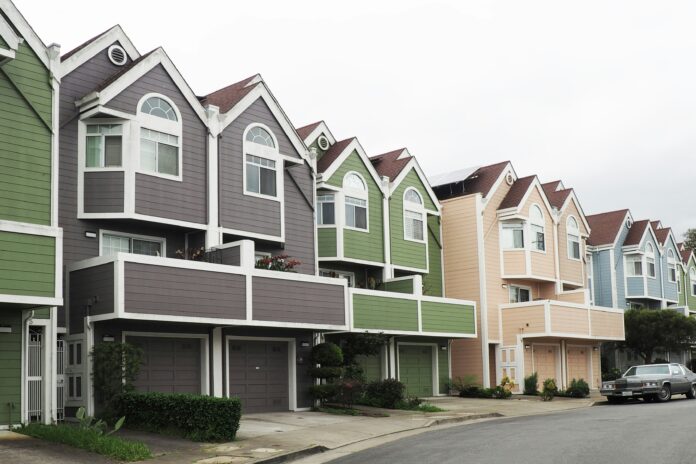For the past decade, investing in rental property in the U.S. was considered a no-brainer. Low mortgage rates and relatively high cap rates made it profitable for investors to buy homes and rent them out, often yielding significant returns. But today, that narrative has changed dramatically, as the numbers just don’t add up for prospective buyers anymore.
One critical reason for this shift is the stark disparity between mortgage rates and cap rates. The current average mortgage rate stands at 6.1%, far outpacing the 4.4% average cap rate for rental properties. This gap spells trouble for anyone hoping to make money through rental income, especially if they rely on debt to finance the purchase.
To put it simply, if you’re borrowing money to buy a rental property today, you’re likely losing cash from the very first month. Historically, from 2012 to 2022, the cap rate—a measure of return on investment for rental properties—was consistently higher than mortgage rates. This led to a surge of investors snapping up single-family homes, with some leveraging debt to scale their portfolios. However, the tables have turned, and with mortgage rates now above cap rates, the profitability of such investments has evaporated.
For a clear example, consider a rental property currently listed in Florida by Invitation Homes, the largest landlord in the U.S. The property is available to rent for $2,299 per month, and if you were to buy it today as an investor, the projected annual net income after expenses would be $14,885. Sounds decent, right? But here’s the kicker: the property would likely cost around $399,800 to purchase, resulting in an unlevered cap rate of just 3.72%.
That figure already indicates a tight profit margin, but it gets worse once you factor in the cost of debt. Let’s say the investor secures advantageous financing—a 70% loan-to-value (LTV) mortgage at 5.75% interest. This interest-only mortgage would result in annual interest costs of $16,092, completely erasing any potential income and leaving the investor with a negative cash flow of -$1,207 right from the start.
These kinds of figures make it clear why investor purchases in the rental market have collapsed in 2024. Data from Redfin highlights that investor activity is down by 60% from the peak seen during the pandemic. With returns squeezed and mortgage costs climbing, many would-be investors are simply staying away from the market, and investment activity is now at its lowest levels since 2018.
However, not all investors are struggling. Those who got into the game before the pandemic, and particularly before the housing market took off in the early 2010s, are still doing quite well. Take Invitation Homes’ example again: while the property mentioned earlier may not be profitable for a new buyer, Invitation Homes purchased it for just $138,000 back in 2013. On that original purchase price, the company is pulling in a 10.8% cap rate with today’s rents and expenses. That’s an enviable return, highlighting just how much an investor’s success depends on the timing and price of their purchase.
The key lesson here is that acquisition basis—essentially the price an investor pays to acquire a property—is everything, particularly for those using debt. Those who bought cheaply during periods when cap rates were high and mortgage rates were low have seen their investments appreciate significantly. For these investors, it’s been possible to lock in long-term gains and ride out fluctuations in the market.
For anyone thinking about buying rental property in 2024, though, the outlook is much bleaker. With cap rates continuing to lag behind mortgage rates, the math simply doesn’t work for investors, especially in high-cost markets like Florida or coastal cities. Even large institutional players like Invitation Homes, which have the benefit of scale, are facing tighter margins on new purchases.
However, there may still be opportunities for investors who are willing to look beyond the typical hotspots. While many coastal and Sun Belt markets are suffering from depressed cap rates, some areas in the Midwest and Deep South still offer relatively attractive returns. For example, in Tuscaloosa, Alabama, a college town with decent growth prospects, the unlevered cap rate in 2024 is expected to exceed 8%. While buying in these areas comes with its own set of risks, the higher returns could provide a cushion against rising financing costs.
Ultimately, the rental property market is a different beast in 2024 than it was just a few years ago. Investors who are serious about making money from real estate need to be more selective and thoughtful about where and when they buy. In high-demand markets with low cap rates and high mortgage rates, the prospects for cash flow and profitability are slim. But in other regions, where cap rates remain high relative to financing costs, there are still some pockets of opportunity.
For most prospective investors, though, the bottom line is this: buying a rental property in America today is a far cry from the lucrative deals of the past decade. The soaring interest rates, declining cap rates, and high purchase prices are squeezing margins to the point where the risks often outweigh the rewards. It’s a tough time to be in the rental game, and for many, sitting on the sidelines might be the wisest move.


